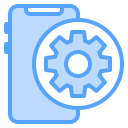Stories from the Trenches
A small team built iOS and Android releases in twelve weeks using Flutter. Shared UI components and a single state layer cut scope creep dramatically. They shipped faster than competitors, learned quickly, and planned native modules later for advanced camera features.
Stories from the Trenches
After struggling with flaky Bluetooth integrations and delayed hardware updates, a logistics company moved critical workflows to native. Downtime dropped, QA cycles shortened, and security reviews simplified because platform APIs and vendor SDKs were directly integrated and fully supported.






